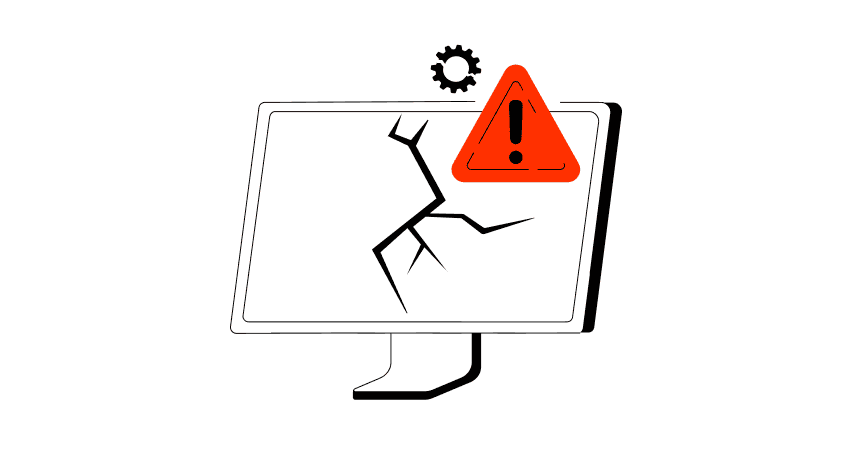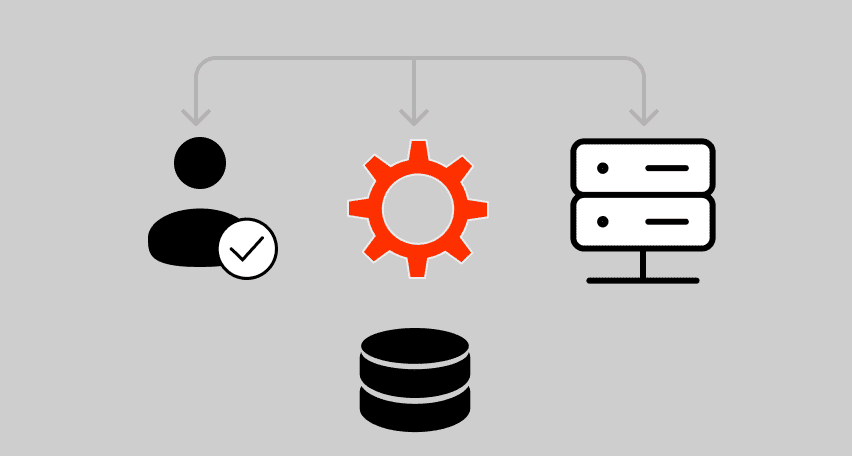The modern era of full cycle DevOps calls for the proper integration of key performance indicators (KPIs). The right metrics can make you to be sure that applications work correctly. DevOps metrics can demonstrate and evaluate how fast you can move before some bugs can happen.
Why DevOps Plays Big Role for Company and How It Affects Business Digits
Which prerequisites are there for DevOps metrics measure? In most cases DevOps metrics measures are development speed, deployment & customer response, frequency of deployments and failures etc.
At first it is needed to define what DevOps is to your organization. DevOps sometimes means absolutely different things to people. Generally DevOps is everything that concerns to deploying and monitoring of apps. The aim of DevOps are quality, speed and performance of app. For technical teams It is useful to identify KPI which will show performance results to business. In another way many fails can occur.
7 Important Types of DevOps metrics
To evaluate how DevOps is going within your company you can use 7 metrics for successful DevOps. By tracking these DevOps metrics, you can evaluate just how fast you can move before you start breaking things.
Deployment frequency
It is a very good Metric to assess how often to do deployments. Better to do small such some often – it will help to make easier test and release. In this case you will deliver value to customers more frequently as well as you can fix more often critical vulnerabilities if they occur and not to wait for any scheduled deployment.
Deployment time
It is special Metric but you can easy evaluate how long you will deploy your app now and after, here you can easy identify potential problems. When you do your checkings often of course it will always proceed quickly.
Lead time
It is time that occurs between starting on an app (or whatever) work until it is in process of deployment. It is helpful to know how long your work item will take time until it goes to production.
Support tickets and feedback
Very good indicator of app problems is customer support tickets and feedback. It reflects how many problems your users find and how you solve it.
Availability
Sometimes it is good to track your downtime which can happen that to decrease some problems or any unplanned outages.
The rate of errors
This rate shows you quality problems, ongoing performance and another issues. You can easy detect Bugs and Production problems. Because it can be different and you can improve always an ongoing process.
Service level agreements (SLA)
You can have it in your company or no but it is always useful to have for both sides of contract for any further misunderstanding if it happens.
Metrics for QA specialists
For QA specialists we can use special better to say more detailed DevOps Metrics.
Groupe 1. Software Requirements
This group of metrics will allow to evaluate how much we work on the requirements (user history) for the software, identify vulnerabilities and the most complex some, potentially problem features of SW, where we need more control:
1. Test coverage requirements.
It means the number of tests on 1 requirement.
Purpose of the metric: to identify weaknesses in the test coverage, highlight risks. This Metric. Of course, this metric will only work if the requirements are well decomposed and more or less equivalent. We have to acknowledge that this is not always possible, but if you can make the requirements atomic enough, then this metric will show the deviation of the coverage of each requirement from the average level.
2. The degree of interconnectedness of requirements.
The metric is calculated as the average number of links of each requirement to other requirements.
Purpose of the metric: to provide a basis for assessing the timing of testing and taking into account possible risks. Knowing the degree of mutual influence of requirements on each other, it is possible, for example, to plan additional time and cases for end-to-end testing, work out regression checks, look towards integration etc. It is difficult to introduce any restrictions on the values of this rate, a lot depends on the specifics of the functional, architecture, technology.
3. The coefficient of stability requirements.
Purpose of the metric: to show how many already implemented requirements have to be redone from release to release while developing new features. Also, the metric gives an idea of how easily the functionality of the system scales, new features are added.
Group 2 – Quality of the developed product
As the name implies, this group of metrics demonstrates the quality of the software, as well as the quality of the development itself.
1. Density of defects.
The proportion of defects attributing to a single module during an iteration or release is calculated.
Purpose of the metric: highlight which part of the software is the most problematic. This information will help in the assessment and planning of work with this module as well as in risk analysis. In any case, this metric will immediately draw our attention to the problem area.
2. The regression coefficient.
Purpose of the metric is to show what the team’s efforts are spent on: do we focus more on creating and debugging new features or do we have to patch existing parts of the software most of the time.
3. The ratio of re-discovered defects.
Purpose of the metric: to assess the quality of development and correction of defects, as well as the complexity of the product or a separate module.
4. The average cost of fixing a defect.
The ratio of the total costs incurred by a team when dealing with all defects (for example, as part of a release) to the total number of defects.
Purpose of the metric: to show how expensive it is for us to detect and correct each defect. This will make it possible to calculate the benefits of reducing the number of mistakes made and evaluate the appropriateness of appropriate techniques. There are certainly no correct values here, everything will be determined by the specifics of a particular situation.
5. The number of defects in the code of a particular developer.
Purpose of the metric: to highlight possible difficulties in the development team, specialists lacks experience, knowledge or time. The metric, among other things, can be an indicator of particularly difficult to develop and maintain a module/system.
Group 3 – QA Team Opportunities and Effectiveness
The main task of this group of metrics is to express in numbers what the testing team is capable of. These indicators can be calculated and compared on a regular basis, analyze trends, observe on them how certain changes affect the work of the team.
1. The velocity of the QA team.
It is calculated as the ratio of realized story points (or requirements, or user stories) for several, for example, 4-5 iterations (Sprint) to the number of selected iterations.
The purpose of the metric is to numerically express the capabilities, speed of the team for further planning the scope of work and analyze development trends. The metric allows you to monitor the speed of QA, to monitor what internal processes or external influences on the team can affect this speed.
2. The average lifetime of the defect.
The total time that defects were discovered that were found as part of an iteration or release to the total of defects.
Purpose of the metric: to show how much, on average, it takes to work with one defect: its registration, correction and reproduction. This indicator allows to evaluate the time required for testing, to identify areas of software with which the greatest difficulties arise. Usually the lifetime of a defect is all the time from its creation (Created status) to Closed, minus all possible Postponed and Hold.
Any bug tracker allows to calculate and upload this information for a single sprint or release. Also, the average lifetime of a defect can be calculated for various modules and software functions or most interesting – separately for each of the testers and developers from the team. So there is a chance to identify particularly complex modules or a weak link in the software team.
Group 4 – Quality of work of the testing team
The task of this set of metrics is to assess how well testers fulfill their tasks, to determine the level of competencies and maturity of the QA team. With this set of indicators, you can compare a team with it at the same time or with other, external testing groups.
1. The effectiveness of tests and test suites.
Purpose of the metric: show how many errors on average allow our cases to be detected. This metric reflects the quality of the test design and helps to monitor the trend of its change. It is best to calculate this metric for all test suites: for individual groups of functional tests, regression suites, Smoke testing etc. This indicator of “slaughter” of tests allows you to monitor the effectiveness of each of the sets, how it changes over time and supplements them with “fresh” tests.
2. The coefficient of errors skipped on the productive.
Number of errors detected after the release of the release/total number of errors in the software detected during testing and after release.
Purpose of the metric: to demonstrate the quality of testing and the effectiveness of error detection – what proportion of defects was filtered out and which passed to the productive.
3. The real time of the QA team.
The ratio of time spent by the team directly on QA activity to the total number of hours.
Purpose of the metric: firstly to increase the accuracy of planning, and secondly, to monitor and manage the effectiveness of a particular team. Targeted activities include analysis, design, evaluations, testing, working meetings and much more. Possible side things are simple due to blockers, communication problems, inaccessibility of resources, etc.
4. Accuracy of time estimation by region/type/ type of work.
Purpose of the metric: allows to use the correction factor for subsequent estimates. The degree of accuracy of the assessment can be determined for the entire team or individual testers, for the entire system or individual software modules.
5. The proportion of unconfirmed (rejected) defects.
Purpose of the metric: to show how many defects were instituted “idle”. If the proportion of defects that were rejected exceeds 20%, then the team may see a desynchronization in the understanding of what is a defect and what is not.
Group 5 – Feedback and User Satisfaction
And finally, a group of metrics showing how the product was accepted by end users, how it met their expectations. But not only feedback about software is important: another important task of this group of metrics is to show whether users are satisfied with the process of interacting with the IT team in general and QA in particular.
1. User satisfaction with IT service.
A regular survey of user satisfaction with the IT service with scoring.
Purpose of the metric: to show whether users trust the IT team, understand how and why its work is organized, how much this work meets expectations. The metric can serve as an indicator that it is necessary to focus on the optimization of the process or to make it more understandable and transparent for users. The satisfaction indicator can be calculated based on the results of the survey based on the results of the release.
2. Product user satisfaction.
Regularly poll users about how satisfied they are with the product.
Purpose of the metric: to determine how much the product being developed meets the expectations of users, whether we are moving in the right direction, whether we correctly determine the importance of features and choose solutions. To calculate this metric, we also conduct a survey of users and calculate the average score. By calculating this indicator on a regular basis (for example, after each release), you can monitor the trend of user satisfaction.
3. Stakeholder involvement.
The number of initiatives and proposals for improving the process and product received during the iteration (release) by stakeholders.
Purpose of the metric: to determine the degree of participation of external stakeholders in the work on the product. Having such a metric on hand, you can navigate where you want to get feedback so that one day you do not encounter contempt and hatred with problems and misunderstanding. Interesting initiatives coming from all stakeholders.
These may be ideas from the side of business or users on the topic of simplifying the product interface, expanding its capabilities. It can also be offers from the infrastructure or a support team regarding the technical aspects of the system: reliability, performance, installation speed, performance monitoring.
Conclusion
Beyond the DevOps metrics we described it can be for sure other Metrics you can track which are specific to your app. They can be critical for monitoring the usage and performance of your applications in realization. We hope our Metrics can help you to track and improve your deployment because of goal of DevOps is interaction and getting technical specialists more involved in the deployment process.
PFLB is a testing service dedicated to ensuring the best software quality for our clients. We have served over 500 companies across a wide variety of domains that range from finance and healthcare to retail and technology.
To learn more about our company, feel free to visit our website.
Related insights in blog articles
11 API Failure Causes and How To Solve Them

When an API fails, the consequences ripple quickly through the entire system. Transactions stall, integrations break, and frustrated users flood your support channels. Understanding exactly why API failures happen — and how to fix them — is essential for developers and businesses alike. This article examines the most common reasons behind API failures, explores the […]
API Mocking: A Complete Guide

Waiting for APIs to become available or stable can slow down entire projects. API mocking provides a smart way to avoid these roadblocks by simulating real API responses, keeping your teams productive and ensuring smoother integration down the line. In this guide, you’ll discover exactly what API mocking involves, how it differs from using real […]
API Endpoint: A Complete Guide

Modern applications rely heavily on APIs (Application Programming Interfaces) to communicate and exchange data across different systems. At the heart of this interaction lies the API endpoint — a fundamental concept that defines where and how data exchanges happen. This guide explains clearly what an API endpoint is, outlines its importance, and provides practical insights […]
gRPC vs. REST: Detailed Comparison

Choosing between gRPC and REST can feel confusing, especially if you’re trying to figure out the best way for your applications to communicate. This article breaks down the grpc vs rest comparison clearly, without jargon or confusion. You’ll learn exactly what each protocol is, the advantages and disadvantages of each, and understand why gRPC is […]
Be the first one to know
We’ll send you a monthly e-mail with all the useful insights that we will have found and analyzed
People love to read
Explore the most popular articles we’ve written so far
- Top 10 Online Load Testing Tools for 2025 May 19, 2025
- Cloud-based Testing: Key Benefits, Features & Types Dec 5, 2024
- Benefits of Performance Testing for Businesses Sep 4, 2024
- Android vs iOS App Performance Testing: What’s the Difference? Dec 9, 2022
- How to Save Money on Performance Testing? Dec 5, 2022